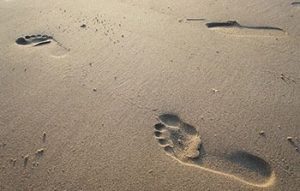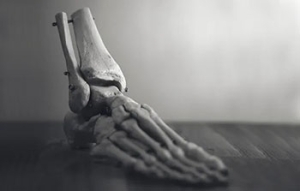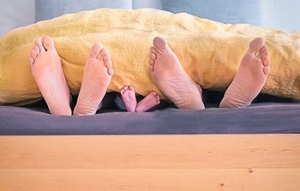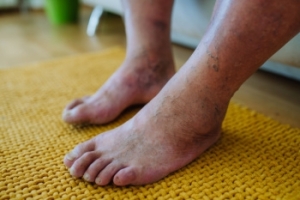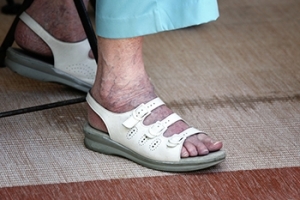Super User
Do I need custom foot orthotics?
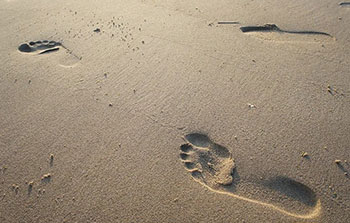 Most people can benefit from custom foot orthotics, but whether you NEED them can be discussed with your doctor. A foot & ankle specialist will examine your feet and evaluate your biomechanics and foot function. Your foot structure, weight, activity level, medical conditions, and foot deformities/ areas of pain (bunion, hammertoe, callus, pinched nerve, heel spur, etc.) all play a role in determining your need for custom orthotics.
Most people can benefit from custom foot orthotics, but whether you NEED them can be discussed with your doctor. A foot & ankle specialist will examine your feet and evaluate your biomechanics and foot function. Your foot structure, weight, activity level, medical conditions, and foot deformities/ areas of pain (bunion, hammertoe, callus, pinched nerve, heel spur, etc.) all play a role in determining your need for custom orthotics.
What options do I have?
1. Over-the-counter (OTC) orthotics might be a solution for some. Well-made brands can offer support and cushioning, but they're "one-size-fits-all" and won't provide personalized correction. While less expensive, they will need to be replaced more often. Ask your doctor if they're an option for you, and if so, what style they recommend.
2. Custom foot orthotics are recommended when your feet need extra help to function properly. Conditions like flat feet or high arches are common examples. Without support, your muscles, tendons and ligaments work harder to absorb the shock of your body weight. Over time, lax ligaments and instability contribute to conditions like arthritis.
If you experience foot pain, discomfort, or fatigue, it's time to schedule an appointment with a foot & ankle specialist. Custom orthotics may be the solution you've been looking for.
Common causes of heel pain
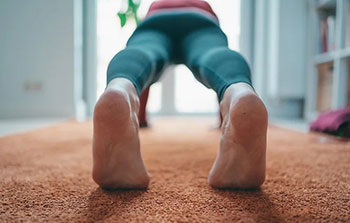 Heel pain can significantly impact daily activities and mobility, making it essential to identify the cause and seek appropriate treatment.
Heel pain can significantly impact daily activities and mobility, making it essential to identify the cause and seek appropriate treatment.
Heel pain presents as a symptom of many conditions, and it's crucial to identify the underlying cause before starting any treatment.
Common causes of heel pain:
- Achilles tendinitis
- Bone contusion
- Bursitis
- Fat pad atrophy
- Growth plate injuries
- Haglund's deformity/ pump bump
- Infection
- Inflammatory arthritis (gout, rheumatoid arthritis, ankylosing spondylitis, spondyloarthropathies)
- Nerve entrapment
- Osteoarthritis
- Peripheral Neuropathy
- Plantar fasciitis
- Plantar fibromatosis
- Posterior impingement
- Stress fractures
- Tumors or growths
When to seek treatment
If you experience persistent or severe heel pain, or discomfort that is affecting your daily life and ability to stay active, it's time to see a foot & ankle specialist. A thorough evaluation, physical exam, imaging (e.g. x-rays, MRI), and medical history review will be performed. Based on your diagnosis, treatment recommendations can be tailored to your specific condition and needs.
Failure to identify the cause of your pain can exacerbate the problem and/or delay proper medical care, ultimately leading to a longer road to recovery.
Osteoporosis Prevention
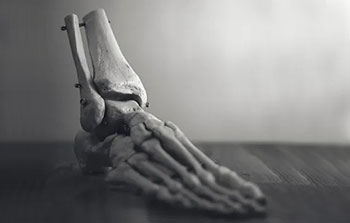 How to prevent Osteoporosis & its progression:
How to prevent Osteoporosis & its progression:
- Proper Nutrition: A well-balanced diet rich in calcium and vitamin D is essential for bone health. Calcium strengthens bones, while vitamin D aids in calcium absorption. If needed, consult with a healthcare professional to determine if calcium and vitamin D supplements are necessary.
- Regular Weight-Bearing Exercise: Weight-bearing exercises help stimulate bone growth and increase bone density. Activities such as walking, jogging, dancing, and aerobics are beneficial for strengthening the bones in the foot and ankle. Engaging in these exercises for at least 30 minutes a day, several times a week, can yield positive results. Weight lifting or strength training also help stimulate bone growth and increase bone density, reducing the risk of fractures associated with osteoporosis.
- Fall Prevention: Preventing falls is crucial for individuals with osteoporosis. Wearing appropriate footwear with good traction and support is important for stability.
- Lifestyle Modifications: Avoid smoking and excessive alcohol consumption, as these habits can impair bone health. Smoking has been linked to decreased bone density, while excessive alcohol intake can interfere with calcium absorption. Maintaining a healthy weight and minimizing stress on the feet and ankles through proper body mechanics, posture, and supportive shoe wear can also be beneficial.
- Consultation with a Healthcare Professional: Regular check-ups and consultations with a healthcare professional are essential for early detection, diagnosis, and management of osteoporosis. We can provide personalized guidance on preventive measures and recommend appropriate screenings and treatments.
By adopting a proactive lifestyle that includes exercise and healthy habits, you can optimize bone health and reduce risk of osteoporosis-related complications.
Combat sweaty feet this summer!
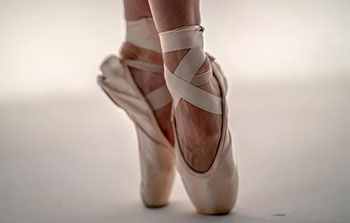 Excess moisture in shoes can hinder performance, cause discomfort, and increase risk of blisters and fungal/ bacterial infections of the skin and nails. Here are some expert recommendations on how to keep your foot-sweat under control:
Excess moisture in shoes can hinder performance, cause discomfort, and increase risk of blisters and fungal/ bacterial infections of the skin and nails. Here are some expert recommendations on how to keep your foot-sweat under control:
- Choose the right shoes. Shoes made from leather, suede, nubuck, canvas, and other natural materials are breathable, allowing for air circulation and prevention of excessive sweating . If these materials aren't an option, look for synthetic fabrics with breathable technologies like mesh.
- Rotate your shoes. Avoid wearing the same shoes every day to allow them to dry completely between wears. To help shoes dry faster, put them in direct sunlight fora few hours and add dryer sheets between wears. You can also add baking soda inside the shoes (if getting white residue on socks/feet won't bother you).
- Moisture-wicking socks. Wearing the proper socks for your sport or activity can make a huge difference in comfort-level and dryness. Socks made of materials such as polyester, nylon, and wool wick away moisture and are best for keeping feet cool, dry, and comfortable. (Cotton socks tend to trap moisture and keep socks damp.)
- Good hygiene. Wash your feet daily with anti-bacterial soap (like Dial), rinse well, and be sure to dry them completely, especially between your toes.
- Powder to the rescue. If you've done all the above and still have excessive moisture, add powder to the mix. Look for products with baking soda, zinc oxide, arrowroot, or kaolin clay for moisture absorption.
If you have specific concerns or conditions, consult with a healthcare professional for personalized recommendations.
Check your Soles: What to know about Flatfeet
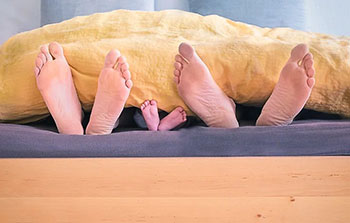 Flat feet can be inherited or develop over time with age, sports injuries, certain medical conditions, ligament/tendon damage or degeneration, increased weight, pregnancy, or from compensation due to inadequate support.
Flat feet can be inherited or develop over time with age, sports injuries, certain medical conditions, ligament/tendon damage or degeneration, increased weight, pregnancy, or from compensation due to inadequate support.
Flatfeet are seen in both children and adults and may be asymptomatic or symptomatic. For asymptomatic cases (especially in children), it's important to keep prevention in mind:
1. Eat healthy and stay hydrated to keep your cells functioning properly and help your body repair damage
2. Keep your muscles strong by exercising regularly, paying particular attention to ankle strengthening exercises
3. Wear supportive shoes when you're active
Flatfoot deformity can be progressive and may become symptomatic over time. Common complaints include achy, tired feet, or foot cramping after long periods of standing. Bunions, hammertoes, and arch collapse may also contribute, adding to the "flat" appearance of the feet.
If you have symptomatic flatfeet, the first step is to determine the cause. A proper evaluation with x-rays can answer questions and help direct a treatment plan. Every flatfoot is different! Treatment should be personalized and depend on your specific diagnosis.
For example, if the cause is:
- Tight muscles causing stress, destabilizing joints in the foot, a proper exercise program with an orthotic may be needed.
- Tendon degeneration, advanced imaging (MRI) may be needed to evaluate the extent of damaged tissue and assessing need for repair.
- Coalition of two bones, short-term immobilization in a boot or bracing may be recommended before jumping to surgery.
- Abnormal joint motion leading to arch collapse and instability, custom orthotics may be best for motion control and support.
-Chronic bone malalignment with abnormal joint wear and cartilage loss, bracing or surgery may become options.
Flatfeet aren't as simple as they seem. Your diagnosis might be more complex than a neighbor or even a family member! Custom orthotics are often the best non-surgical solution to help control abnormal motion in your feet, alleviating painful symptoms associated with flatfeet.
Prevention IS the best medicine! Schedule a consultation with us to help prevent worsening of symptoms.
Recognizing Signs of Diabetes in the Foot
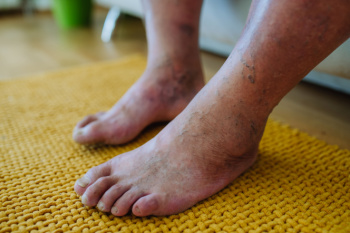
Diabetes can manifest in the feet through several noticeable signs. One common symptom is persistent numbness or tingling, often caused by nerve damage, known as diabetic neuropathy. This condition can lead to a loss of sensation, making it difficult to detect injuries or infections. Another sign is slow-healing sores or ulcers, which can develop from minor cuts or blisters due to poor circulation. Discoloration of the skin, such as redness, can indicate inflammation or infection. Swelling in the feet and ankles might also be present, signaling potential underlying issues. Additionally, changes in skin texture, including dryness or cracking, can occur. Fungal infections, particularly between the toes, are more frequent in diabetics. If you have diabetes, it is strongly suggested that you are under the care of a podiatrist who can help you manage this serious condition.
Diabetic foot care is important in preventing foot ailments such as ulcers. If you are suffering from diabetes or have any other concerns about your feet, contact one of our podiatrists from Carolina Foot & Ankle. Our doctors can provide the care you need to keep you pain-free and on your feet.
Diabetic Foot Care
Diabetes affects millions of people every year. The condition can damage blood vessels in many parts of the body, especially the feet. Because of this, taking care of your feet is essential if you have diabetes, and having a podiatrist help monitor your foot health is highly recommended.
The Importance of Caring for Your Feet
- Routinely inspect your feet for bruises or sores.
- Wear socks that fit your feet comfortably.
- Wear comfortable shoes that provide adequate support.
Patients with diabetes should have their doctor monitor their blood levels, as blood sugar levels play such a huge role in diabetic care. Monitoring these levels on a regular basis is highly advised.
It is always best to inform your healthcare professional of any concerns you may have regarding your feet, especially for diabetic patients. Early treatment and routine foot examinations are keys to maintaining proper health, especially because severe complications can arise if proper treatment is not applied.
If you have any questions please feel free to contact one of our offices located in Huntersville Office | 16419 Northcross Dr Suite A, Huntersville, NC 28078; Mooresvillle Office | 206 Joe Knox Avenue Suite D, Mooresville, NC 28117; and Mountain Island | 10310 Couloak Drive Suite 200, Charlotte, NC 28216 . We offer the newest diagnostic and treatment technologies for all your foot and ankle needs.
Diabetic Foot Care
Diabetes can cause two problems that can potentially affect the feet: Diabetic neuropathy and Peripheral Vascular Disease. Diabetic neuropathy occurs when nerves in your legs and feet become damaged, which prevents you from feeling heat, cold, or pain. The problem with diabetic neuropathy is that a cut or sore on the foot may go unnoticed and the cut may eventually become infected. This condition is also a main cause of foot ulcers. Additionally, Peripheral vascular disease also affects blood flow in the body. Poor blood flow will cause sores and cuts to take longer to heal. Infections that don’t heal do to poor blood flow can potentially cause ulcers or gangrene.
There are certain foot problems that are more commonly found in people with diabetes such as Athlete’s foot, calluses, corns, blisters, bunions, foot ulcers, ingrown toenails, and plantar warts. These conditions can lead to infection and serious complications such as amputation. Fortunately, proper foot care can help prevent these foot problems before they progress into more serious complications.
Each day you should wash your feet in warm water with a mild soap. When you finish washing your feet, dry them carefully especially between your toes. You should also perform daily foot inspections to ensure you don’t have any redness, blisters, or calluses. Furthermore, if you are diabetic, you should always wear closed-toed shoes or slippers to protect your feet. Practicing these tips will help ensure that your feet are kept healthy and away from infection.
If you have diabetes, contact your podiatrist if you have any of the following symptoms on your feet: changes in skin color, corns or calluses, open sores that are slow to heal, unusual and persistent odor, or changes in skin temperature. Your podiatrist will do a thorough examination of your feet to help treat these problematic conditions.
Aging and the Feet
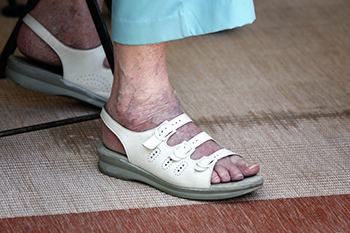 As the aging population continues to grow, the need for specialized podiatric services in geriatrics is becoming increasingly critical. Older adults often face numerous foot and ankle issues due to years of wear and tear, decreased mobility, and chronic conditions like diabetes, arthritis, and circulatory problems. These issues can significantly impact their quality of life, leading to pain, decreased mobility, and a higher risk of falls and related injuries. Podiatric care is essential for the elderly to maintain their independence and mobility. Regular foot examinations can help prevent and manage conditions, such as bunions, corns, calluses, fungal infections, and foot ulcers. Proper foot care also aids in the early detection and treatment of serious complications such as peripheral neuropathy and poor circulation, which are common in older adults with diabetes. Preventative measures, routine care, and wearing appropriate footwear are vital components of geriatric podiatry services. If you are a senior, it is suggested that you schedule an appointment with a podiatrist for comprehensive foot health management, and to address any specific concerns you may have about your feet or ankles.
As the aging population continues to grow, the need for specialized podiatric services in geriatrics is becoming increasingly critical. Older adults often face numerous foot and ankle issues due to years of wear and tear, decreased mobility, and chronic conditions like diabetes, arthritis, and circulatory problems. These issues can significantly impact their quality of life, leading to pain, decreased mobility, and a higher risk of falls and related injuries. Podiatric care is essential for the elderly to maintain their independence and mobility. Regular foot examinations can help prevent and manage conditions, such as bunions, corns, calluses, fungal infections, and foot ulcers. Proper foot care also aids in the early detection and treatment of serious complications such as peripheral neuropathy and poor circulation, which are common in older adults with diabetes. Preventative measures, routine care, and wearing appropriate footwear are vital components of geriatric podiatry services. If you are a senior, it is suggested that you schedule an appointment with a podiatrist for comprehensive foot health management, and to address any specific concerns you may have about your feet or ankles.
If you need your feet checked, contact one of our podiatrists of Carolina Foot & Ankle. Our doctors will attend to all of your foot and ankle needs and provide you with quality treatment.
Geriatrics and Podiatry
When people age, some common issues that may occur are bone density loss, dry skin, poor circulation, and rough brittle nails. These issues may also affect your foot health if the necessary steps are not taken to alleviate the problems.
It is important to take care of your feet because feet that are injured or diseased can affect your overall health. Having painful feet hinders your ability to do daily activities or may decrease your willingness to do the things that you need to do.
Visiting Your Geriatrician
As we age, health problems become more likely, so it is essential to visit your doctor for check-ups to ensure that you are doing the best you can to take care of your health. It is recommended to check your feet frequently for any possible cuts, bruises, swelling, corns or any other irregularities.
Taking Care of Elderly Feet
Cracked or dry feet can be treated by applying moisturizer often. It is also important not to wear old socks because the older the sock is, the higher the possibility there will be that there is bacteria there. Wear fresh socks and make sure they fit properly.
Proper foot health means that you can have a more active lifestyle and you will not be bogged down by pain. Foot health also leads to good circulation, which is paramount for overall health.
If you have any questions, please feel free to contact one of our offices located in Huntersville Office | 16419 Northcross Dr Suite A, Huntersville, NC 28078; Mooresvillle Office | 206 Joe Knox Avenue Suite D, Mooresville, NC 28117; and Mountain Island | 10310 Couloak Drive Suite 200, Charlotte, NC 28216 . We offer the newest diagnostic tools and technology to treat your foot and ankle needs.
Geriatrics and Podiatry
Bone density loss, dry skin, poor circulation, and rough and brittle nails are some of the common problems that can occur as people age. The effect that these problems has on foot health should be of particular concern in comprehensive geriatric care.
Feet that are diseased or injured have a negative effect on overall health and safety. Painful feet limit a person’s willingness and ability to stay active. Poor foot health can also cause gait change, which can lead to falls and accidents. Even though recovery time from health problems naturally slows as we age, many foot problems can be avoided altogether with regular prophylactic care.
Feet should be thoroughly washed in warm water daily. Care must be taken to dry the feet well, making sure to dry between and under the toes. Any left-over moisture can cause problems like foot fungus. After cleaning feet carefully check for problems such as cracked skin, bruises, swelling, cuts, corns, or other irregularities.
Examine toenails for ingrown, jagged, or split nails. Long toenails should be cut straight across. Never cut toenails at an angle or down the side as this may lead to ingrown nails.
Cracked and dry feet should be treated once or twice a day with a non-greasy moisturizer. Rub the moisturizer into the skin and allow it to dry before putting on socks and shoes. Sweaty feet can be dusted with a small amount of talcum powder. Avoid putting talcum directly into shoes as this may make feet slip within the shoe and cause a serious fall.
Wear clean dry socks each day. Not only do clean socks feel better on the feet, but socks worn for longer periods may harbor disease and odor-causing bacteria. Socks should not be tight around the top as they can leave marks on the leg. Socks that are too small can bring about bruising caused by pressure against the toes.
Wear comfortable and well-fitting shoes. If possible, consult a professional footwear specialist when purchasing shoes. Do not walk around barefoot as this exposes the feet to possible injury and bacteria.
Good foot health allows a more active lifestyle, which improves blood flow. Good circulation aids in recovery from injury or illness. It is also important for maintaining overall health.
Serious health problems can manifest themselves as symptoms in the feet. The elderly should seek professional help from a podiatrist if experiencing foot problems like tingling, numbness, pain, infection, or a sore that does not heal. Taking care of these problems right away can prevent the development of severe cases.
